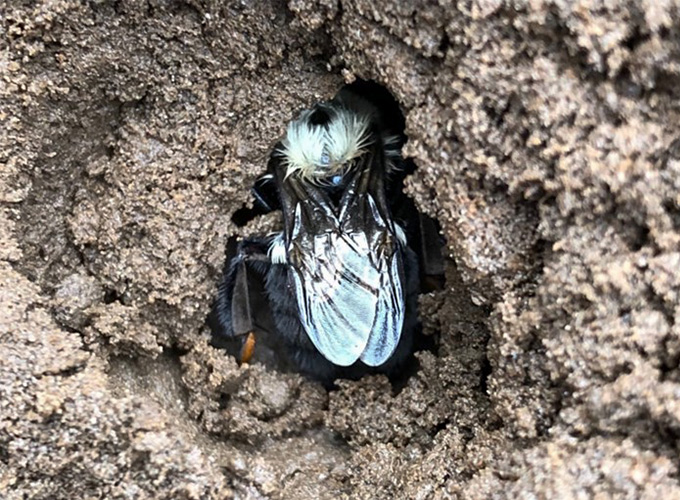Hibernating bumblebee queens can survive days of watery submersion

Life for a bumblebee queen isn’t always regal, nor cushy. In the spring, she starts to build her colony. But before that, she must survive winter by hibernating alone underground, at risk of floods and other hazards.
Fortunately, these sturdy queens are no divas. Researchers have found that hibernating bumblebee queens can survive being submerged for up to a week.
Bee biologists Sabrina Rondeau and Nigel Raine stumbled on this discovery after a lab accident at the University of Guelph in Canada. They had been studying how hibernating queens respond to pesticide exposures. The refrigerator storing the dormant bees malfunctioned, causing four of the vials housing queens to flood.
“I was very concerned at first,” says Rondeau, now at the University of Ottawa. “I thought, of course, they were dead.” But when she picked up the queens with forceps, they started wiggling. They were most definitely alive.
Rondeau and Raine decided to run more rigorous tests to see just how waterproof these queens are. They shared their findings in April in Biology Letters.
Weathering the storm
To begin, the researchers gathered 143 queens of the common eastern bumblebee (Bombus impatiens). All had been left from another experiment. They placed each in a soil-filled vial and stored them at a cold temperature to simulate hibernation.
They then added water to the vials so that the queens were either submerged or left floating on the water’s surface. Seventeen queens served as controls; no water was added to their vials.
Before starting a colony in the spring, bumblebee queens hibernate over the winter in an underground chamber called a hibernaculum, like the one shown here.Nigel Raine
The flooded queens were kept at cold hibernation temperature for eight hours, 24 hours or one week. After that, these royals were moved to vials with dry soil and kept in the cold for eight weeks more.
This test setup mimicked possible flooding scenarios that could happen in the real world. It’s not known how often rains may fill or partially fill a queen’s hibernation chamber with water. Generally, hibernating queens seem to prefer sloped ground and sandy soils — ones unlikely to flood. Even so, the new work suggests they could weather a storm.
Seventeen of the 21 queens that were submerged for seven days and then resumed hibernation were alive eight weeks later. This survival rate did not differ statistically from the 17 bees that weren’t submerged. Of those, 15 survived to eight weeks.
The submerged queens were soaking wet when first pulled out of the water, Rondeau says. But the next day, “they are fluffy again, beautiful, like nothing happened,” she recalls. “Extremely surprising.”
Royal inquiry
The queens’ ability to bounce back raises more questions, Raine says. “Does it affect their ability to found colonies?” Or produce lots of healthy young to build a successful colony?
There’s also the question of how the queens manage to survive being submerged for so long. Many insects have adapted ways to avoid drowning, such as closing their spiracles. Those are the body openings through which they breathe. Rondeau suspects that the low metabolism of hibernating queens might also help. That could allow them to keep their spiracles closed longer than if they were fully awake and active.
“What it really shows is how little we know — and how much there is to learn — about the bumblebee life cycle,” says Elizabeth Crone. She’s a biologist at the University of California, Davis, who was not part of this work. “Their interactions with flowers are one of the best studied phenomena in ecology,” she notes. “In contrast, we know very little about their nesting, hibernation and reproduction.”
Do you have a science question? We can help!
Submit your question here, and we might answer it an upcoming issue of Science News Explores
Welcome to Billionaire Club Co LLC, your gateway to a brand-new social media experience! Sign up today and dive into over 10,000 fresh daily articles and videos curated just for your enjoyment. Enjoy the ad free experience, unlimited content interactions, and get that coveted blue check verification—all for just $1 a month!
Account Frozen
Your account is frozen. You can still view content but cannot interact with it.
Please go to your settings to update your account status.
Open Profile Settings